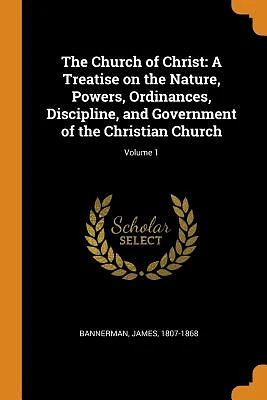Home
Testimonies for the Church Volume 5
Loading Inventory...
Barnes and Noble
Testimonies for the Church Volume 5
Current price: $31.95


Barnes and Noble
Testimonies for the Church Volume 5
Current price: $31.95
Loading Inventory...
Size: Hardcover
*Product Information may vary - to confirm product availability, pricing, and additional information please contact Barnes and Noble
This volume of Testimonies to members of the Seventh-day Adventist Church spans the years from 1882-1889. During this eventful decade, two new advanced schools (in Massachusetts and California, respectively) were added to educate future workers for the church. The volume addresses many of the challenges-from discipline to choosing curriculum-attending the educational work.
The 1880's were a prolific time in terms of publishing for the growing church. In addition to "Testimonies for the Church Volume 5, books written by Ellen White included "A Sketch of the Christian Experience and Views of Ellen G. White," "Spiritual Gifts Volume One," and "Sketches from the Life of Paul."
"The Great Controversy," which was also finished during this time period, was published in 1884 and immediately sent forth, through colporteurs, to many thousands of homes. During those years, the denominational headquarters in Battle Creek, Michigan, along with the publishing house and sanitarium there, continued to prosper and grow. To staff these institutions, large numbers of Adventists moved to Battle Creek. The challenges of so many Adventists gathering in one center, with the inevitable tendency to become complacent and worldly, are addressed in the early part of this volume. The dangers that the work would lose its initial simplicity is also addressed, while the virtues of economy, industry, and alertness are emphasized.
Messages of warning and encouragement were also penned to the growing number of members in the Pacific Northwest. Many settlers and pioneers in the push westward, with their energy, daring, and rugged individuality, accepted the call of the Advent message. These energetic pioneers needed the strong, molding influence of the Spirit of God in the development of Christian character, together with warnings against the love of money and worldly ambitions.
Counsel on building solid church edifices, against lightly regarding pledges to God's cause, and many other problems arising from the new territories are also included in this volume.
While the work in Europe continued to grow, the church was also challenged by a leading evangelist who lost his way. Two communications written by Ellen White to try to save this man from the plunge he eventually took are found in this volume. Criticisms of the prophetic gift are also addressed.
Towards the close of the time span covered by volume 5, the simple message of salvation through righteousness by faith was proclaimed more fully in the 1888 General Conference session held in Minneapolis, Minnesota. The spiritual revival resulting from those meetings was quickly followed by a crisis in the United States in the form of a proposed national Sunday law. As a result, the topic of liberty of conscience-together with the appropriate roles of church and state-are also discussed in this volume.
Because of the practical nature of its timely warnings and counsels, volume 5 is still of great value to the church today. Its pages include solemn statements about the preparation needed for the impending conflict and the nearness of the end. Executives are admonished, physicians counseled, parents instructed, teachers warned, and all are called to deeper consecration. When released, the counsel of Testimonies volume 5 exerted a steadying, sobering influence upon Adventists as they launched into greater lines of endeavor. They exert the same influence today.
The 1880's were a prolific time in terms of publishing for the growing church. In addition to "Testimonies for the Church Volume 5, books written by Ellen White included "A Sketch of the Christian Experience and Views of Ellen G. White," "Spiritual Gifts Volume One," and "Sketches from the Life of Paul."
"The Great Controversy," which was also finished during this time period, was published in 1884 and immediately sent forth, through colporteurs, to many thousands of homes. During those years, the denominational headquarters in Battle Creek, Michigan, along with the publishing house and sanitarium there, continued to prosper and grow. To staff these institutions, large numbers of Adventists moved to Battle Creek. The challenges of so many Adventists gathering in one center, with the inevitable tendency to become complacent and worldly, are addressed in the early part of this volume. The dangers that the work would lose its initial simplicity is also addressed, while the virtues of economy, industry, and alertness are emphasized.
Messages of warning and encouragement were also penned to the growing number of members in the Pacific Northwest. Many settlers and pioneers in the push westward, with their energy, daring, and rugged individuality, accepted the call of the Advent message. These energetic pioneers needed the strong, molding influence of the Spirit of God in the development of Christian character, together with warnings against the love of money and worldly ambitions.
Counsel on building solid church edifices, against lightly regarding pledges to God's cause, and many other problems arising from the new territories are also included in this volume.
While the work in Europe continued to grow, the church was also challenged by a leading evangelist who lost his way. Two communications written by Ellen White to try to save this man from the plunge he eventually took are found in this volume. Criticisms of the prophetic gift are also addressed.
Towards the close of the time span covered by volume 5, the simple message of salvation through righteousness by faith was proclaimed more fully in the 1888 General Conference session held in Minneapolis, Minnesota. The spiritual revival resulting from those meetings was quickly followed by a crisis in the United States in the form of a proposed national Sunday law. As a result, the topic of liberty of conscience-together with the appropriate roles of church and state-are also discussed in this volume.
Because of the practical nature of its timely warnings and counsels, volume 5 is still of great value to the church today. Its pages include solemn statements about the preparation needed for the impending conflict and the nearness of the end. Executives are admonished, physicians counseled, parents instructed, teachers warned, and all are called to deeper consecration. When released, the counsel of Testimonies volume 5 exerted a steadying, sobering influence upon Adventists as they launched into greater lines of endeavor. They exert the same influence today.


















